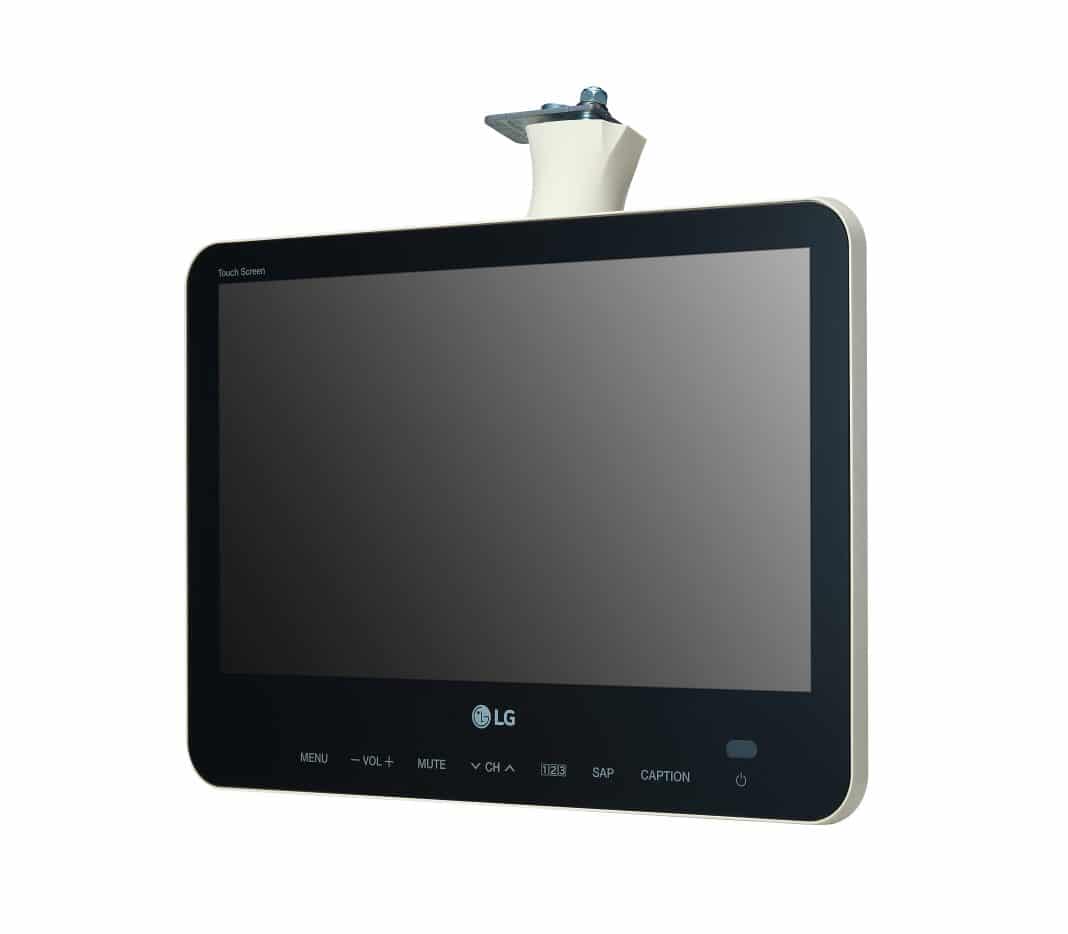LG Business Solutions USA announced two new hospital TVs that are designed to improve patient management and engagement while adhering to critical safety standards for deployment in healthcare facilities.
With the new 65- and 15-inch LG hospital TVs (models 65US772M and 15LS766A respectively), LG offers hospitals the widest selections of in-room smart TVs, including support for video conferencing. They are UL Certified for use in healthcare facilities to give hospitals peace of mind that the technology works safely so healthcare workers can focus on patient care.
“LG’s reliable and innovative hospital-grade TVs are designed with features that enable customized patient care while meeting rigorous UL safety standards applicable to products used in hospital settings,” said Tom Mottlau, Director of Healthcare Solutions, LG Electronics USA. “Our newest LG hospital TVs reflect ongoing feedback from the industry and include capabilities integrated to meet the unique needs of a critical market.”
LG hospital TVs, including the 65US772M and 15LS766A, have been certified by UL, the global safety science leader. LG hospital TVs are compliant with the general UL 60065 Standard (for Audio, Video and Similar Electronic Apparatus – Safety Requirements), as well as additional safety requirements in Annex Q, Equipment for Use in Health Care Facilities, that address risks identified by the National Fire Protection Agency (NFPA) that are unique to healthcare facilities.
“LG has demonstrated due diligence by certifying their hospital TVs through UL not only as general-purpose audio/video products but also as technology specifically designed for health care facilities,” said Ibrahim Jilani, UL’s director of consumer technology. “By meeting stringent health care- and NFPA-specific requirements, LG delivers confidence to health care providers that their UL Certified commercial hospital displays take into consideration the unique properties of that environment.”
Smart Hospital TVs for a Better Patient Experience
The company’s biggest-screen in-room hospital TV ever, the 65-inch 4K Ultra HD model 65US772M features LG’s NanoCell display technology for a sharp, vivid picture in an ultra-slim design. It joins the 55-inch 55US772M model in LG’s NanoCell-based hospital TV lineup.
The LG 65US772M provides built-in support for leading hospital pillow speakers and embedded broadband LAN capability so hospitals can deliver video on demand without requiring a separate set-top box in the patient room. It also includes LG EZ-Manager configuration software with an intuitive interface for setting up the TV to work in a hospital setting, plus a software-enabled access point feature that turns the TV into a Wi-Fi hotspot.
The 15-inch LG 15LS766A Personal Healthcare Smart Touch TV with webOS 5.0 includes LG’s IPS panel technology and a multi-touch screen. It is designed to be installed on an adjustable arm for use in shared spaces or smaller patient rooms and will support the new, modular LG AM-AC21EA video camera, which attaches securely to the 15LS766A and supports HD video communication.
Both hospital TVs feature LG’s integrated Pro:Centric hospital management solutions with LG webOS 5.0 application software and Pro:Idiom digital rights management, allowing hospitals and LG’s patient engagement development partners to customize an interactive patient room experience with entertainment, hospital information, services, patient education, and more. Pro:Centric’s built-in support of the WebRTC communication platform makes it possible to conduct video calls between patients and clinicians or family, enabling a new level of engagement.
The new webOS 5.0 has been designed and implemented so that its Chromium web browser can be upgraded by LG’s solution partners to that of future webOS versions. An upgradeable webOS browser allows solution integrators to take advantage of new capabilities as they become available and further enhance their application platforms.
“Our healthcare patient engagement development partners requested an upgradable version of webOS for our Pro:Centric smart TV platform so they could more easily introduce new features for their hospital customers,” said Mottlau. “For the latest versions of webOS, LG worked closely with our partners to make their request a reality and to deliver a hospital TV platform that can evolve over time.”
